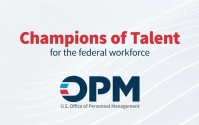The Signal and the Noise in a Screwworm Scare
An official government announcement, particularly one concerning a potential biosecurity threat, is a carefully constructed data packet. The language is chosen to convey specific information while simultaneously managing public perception. When U.S. Secretary of Agriculture Brooke Rollins took to X (formerly Twitter) to announce Another New World Screwworm Detection In Mexico, the signal was clear: We have this under control.
The post was a masterclass in crisis communication. It provided key data points: the detection was 170 miles from the U.S. border, and it was an additional 100 miles south of the last case. It outlined a swift response: "boots on the ground within hours" and the execution of a "5-point plan." Rollins labeled the case an "isolated incident" and framed the response as a "top national security priority."
On the surface, this is a textbook example of competent governance. But my work has taught me to look at the metadata—the information around the core message. The delivery mechanism (a social media post), the carefully selected reassuring language, and the timing all suggest the primary goal wasn't just to inform, but to project an aura of impenetrable control. The message is designed to be consumed, accepted, and to quell immediate market or public panic. The real question isn't what was said, but what the structure of the announcement tells us about the underlying situation. Is this a routine containment of a minor issue, or a carefully managed narrative designed to prevent alarm over a recurring, and potentially systemic, vulnerability?
A Calculated Blend of Biology and Politics
The core of the USDA’s strategy relies on a proven, if brute-force, method: surveillance, trapping, and the release of millions of sterile male flies (a standard but resource-intensive containment method). This creates a biological dead end for the parasite population. The approach is sound. The logistics are impressive. But the most revealing data point in Secretary Rollins’ announcement had nothing to do with entomology.
It was this line: "Despite the Democrat Shutdown, the intrepid men and women at the USDA continue to work around the clock to protect our great nation."

I've analyzed countless corporate and government communications, and the decision to inject overt partisanship into a biosecurity alert is a significant outlier. It’s a deliberate variable introduced into a public health equation. This isn't an accidental turn of phrase; it's a calculated move to frame a national security issue through a political lens. The statement functionally splits the audience. For supporters, it reinforces a narrative of a steadfast administration overcoming partisan obstacles. For others, it risks eroding the credibility of the very institution issuing the warning.
Think of our biosecurity border as a complex firewall. The first NWS detection was a breach. It was patched. This second detection, even though it’s further away—the distance is roughly 170 miles from the border, or to be more exact, about 100 miles further south than the last incursion—isn't just another alert. It's a second stress test on the same system. Instead of focusing exclusively on the firewall's integrity, the official communication diverts a significant portion of its bandwidth to blaming the building's other maintenance crew. It begs the question: is the primary objective to fortify the defenses, or to win the public relations battle that will follow if those defenses fail? What happens to public trust and bipartisan cooperation when the next, perhaps closer, detection occurs?
The scene on the ground is likely one of quiet, apolitical focus. Imagine a USDA field agent, miles from any press conference, kneeling in the dust under a relentless Mexican sun. The only sound is the dry buzz of insects and the metallic click of a specialized trap being armed. That agent isn't thinking about shutdowns or party politics; they are focused on a single, tangible mission. Yet, the official narrative broadcast hundreds of miles away is telling a completely different story, one where political adversaries are as much a part of the landscape as the threat itself.
This discrepancy between the operational reality and the political messaging is where the real risk lies. A government shutdown, which we know from other reports has delayed critical agricultural data like the WASDE report, has real-world consequences. Using it as a political cudgel in the middle of a potential crisis is a high-risk gamble. It subordinates the clear, unified signal required for public health confidence to the short-term noise of a political news cycle.
This Is a PR Strategy, Not a Biosecurity Report
Let’s be perfectly clear. The public statements from the Secretary of Agriculture are not a transparent assessment of a biological threat; they are a public relations campaign designed to project absolute control. The data provided is minimal and curated. We are told of a "5-point plan," but its specific components are not detailed. We are assured it's an "isolated incident," a conclusion that seems remarkably swift given that verification teams were only just being dispatched.
The injection of partisan politics is the most telling signal. It reveals that the administration’s calculus is as focused on managing the domestic political narrative as it is on managing the foreign biological threat. When the two are in conflict, which one takes priority? The evidence here suggests they are, at best, given equal weight. This should be unsettling for anyone, regardless of political affiliation, who depends on the integrity of the American food supply. The real threat isn't just a fly; it's the risk that clear, data-driven decision-making becomes contaminated by political expediency.










